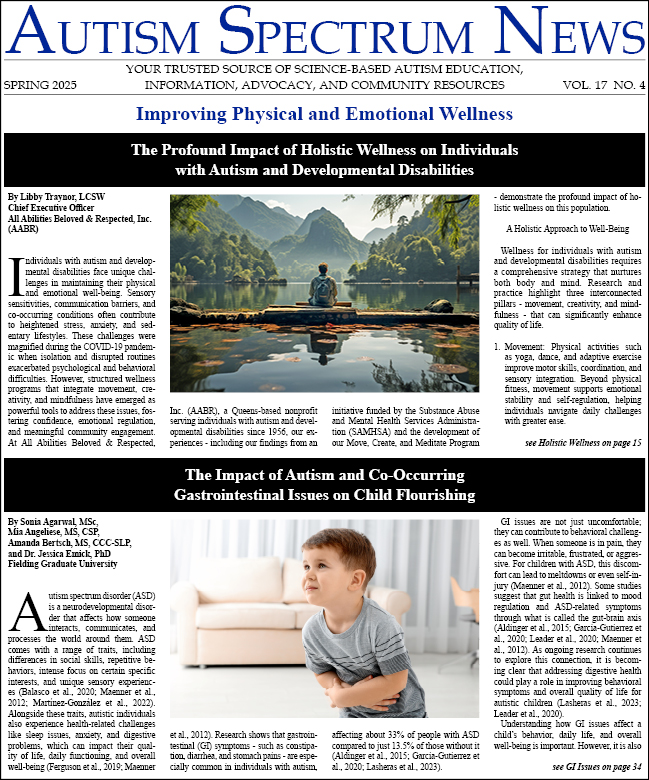-
The Importance of Proactive Sexuality Education for the Autistic Population
For most adults, an important quality of life factor is romantic/sexual relationships. Autistic individuals are no different. However, they are less likely to receive sexual education in a proactive framework than their neurotypical peers (e.g., Sala et al., 2019). When sexual education is provided...
-
The School Consultation Project: An Avenue to Support Autistic Students and Empower Educators
Autistic individuals who exhibit challenging behaviors are increasingly likely to hold communication deficits, require supports in daily routines, and are less likely to be placed in inclusive school settings (Lory et al., 2020; Iadarola et al., 2017). As such, challenging behaviors pose a...
-
The Benefits of Training Parents to Use Antecedent-Behavior-Consequence Charts
Individuals with autism spectrum disorder can exhibit many behaviors their families, teachers, and other supporters in their communities find challenging. Likewise, individuals on the spectrum see the world at large as a challenge, and the people in their lives find the challenging behaviors their...
-
Crisis Management in Children with Autism and First Responders
Children diagnosed with autism spectrum disorder (ASD) are more likely to engage in challenging behavior than their neurotypical peers. Severity of these behaviors range from mild to very severe and include topographies such as aggression, self-injury, destructive behavior, pica, and elopement...
-
Screening for Anxiety and Depression in the Context of Challenging Behavior
Challenging behavior is common among individuals with autism spectrum disorder (ASD). Challenging behavior includes tantrums, self-injurious behavior, noncompliance, and aggression, especially when they occur with heightened intensity or frequency (Machalicek et al., 2016). In addition, anxiety and...
-
Assisting Caregivers with the De-Escalation of Challenging Behaviors
Throughout my time as a special education teacher and administrator, I have always searched for ways to help my Autism Spectrum Disorder (ASD) students de-escalate themselves without having to get to a point where the use of a protective hold was needed. This was, at times, a herculean feat because...
-
Identifying Why Challenging Behavior Occurs: Tips for Prevention
Children with autism often display higher rates of challenging behaviors, including non-compliance, aggression, self-injurious behavior, and socially inappropriate behavior such as disrobing in public, when compared to typically developing peers (Holden & Gitlesen, 2006). It can be difficult...
-
Inappropriate Behaviors in Adult Autistics: We Mean No Harm
During my long involvement with the adult Asperger Syndrome / autism spectrum community, I often make the disclaimer, when criticizing inappropriate behaviors of other autistics, that I have probably been guilty of similar behaviors, at least to some degree, at some earlier time in my life. Also,...
-
Values-Based Behavior Planning – Responding to Challenging Behaviors for Individuals with Complex Profiles via Comprehensive Planning
Though a small percentage, some individuals with autism and other developmental disabilities can display dangerous challenging behaviors such as high intensity aggression or self-injury. While the field of applied behavior analysis has made great strides in the assessment and treatment of...
-
Designing Environments to Reduce Challenging Behaviors
Challenging behaviors - defined as abnormal behaviors that deviate from one’s culture in frequency, intensity, or duration - are common among autistics, and have the potential to cause hardships for the autistic and others (Jang, Healy, & Mannion, 2011; Matson & Minshawi, 2007; Myers...




